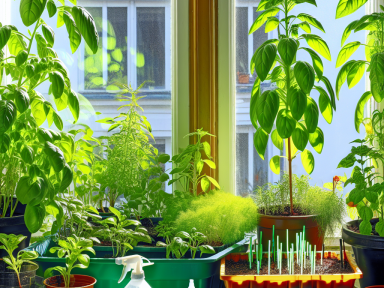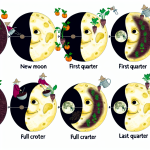Choosing the Right Space for Your Indoor Garden
Selecting the perfect spot for your indoor garden is crucial. **Natural light** is essential for most plants, so identify a space near a **south or west-facing window** to ensure they receive ample sunlight. If natural light is limited, consider investing in *full-spectrum grow lights* which mimic the sun’s rays and support photosynthesis.
Optimal Soil and Containers
The quality of your soil can make or break your indoor garden. Use a **well-draining potting mix** with organic matter such as compost. Avoid using outdoor garden soil, as it can compact and hinder root growth. As for containers, make sure they have **adequate drainage holes** to prevent waterlogging, which can lead to root rot.
Watering Techniques and Schedules
Overwatering is a common pitfall. Water your plants only when the top inch of soil feels dry. It is advisable to use a **watering can with a narrow spout** for precision. **Self-watering pots** are another worthy investment, especially for beginners. Ensure your containers have **saucers** to catch excess water and protect your floors.
Choosing the Best Plants for Indoor Growing
Not all plants thrive indoors. Here are some top choices for indoor gardening:
- Lettuce and Greens: Varieties like spinach, arugula, and kale grow well in cooler indoor environments and can be harvested frequently.
- Herbs: Basil, parsley, chives, and mint can grow effortlessly on a sunny windowsill.
- Tomatoes: Opt for dwarf or cherry varieties which are more suited to indoor conditions.
- Peppers: Small pepper varieties can provide a productive harvest and add color to your indoor garden.
Maintaining Ideal Temperature and Humidity
Indoor plants prefer *consistent temperatures* between 65°F and 75°F. Avoid placing plants near heat vents or drafty windows. Use a **humidity tray** or a **humidifier** to maintain humidity levels between 40-60%, particularly during winter months when indoor air can get dry.
Pest Control Without Harsh Chemicals
Indoor plants are not immune to pests. Inspect your plants regularly for signs of aphids, spider mites, and fungus gnats. Here are some *organic pest control methods*:
- Introduce *beneficial insects* like ladybugs for natural pest management.
- Make a **homemade insecticidal soap spray** by mixing one teaspoon of mild liquid soap with one liter of water.
- Use **neem oil**, a natural pesticide, to keep various pests at bay.
Feeding Your Plants
Indoor plants have different nutrient requirements than those grown outdoors. Use a **balanced liquid fertilizer** every 2-4 weeks, diluted to half-strength to prevent over-fertilization. Alternatively, **organic options** such as diluted fish emulsion or compost tea can be very effective.
Harvesting for Continuous Yield
Regular harvesting encourages plants to produce more. For example, with leafy greens, employ the “**cut-and-come-again**” technique, removing the outer leaves and allowing the inner leaves to continue growing. Herbs should be trimmed back regularly to prevent them from flowering and to encourage bushier growth.
Indoors or outdoors, the basics of gardening remain rooted (pun intended) in observation, patience, and care. With these tips, your indoor garden will not only thrive but provide a bountiful supply of fresh produce year-round.



GIPHY App Key not set. Please check settings